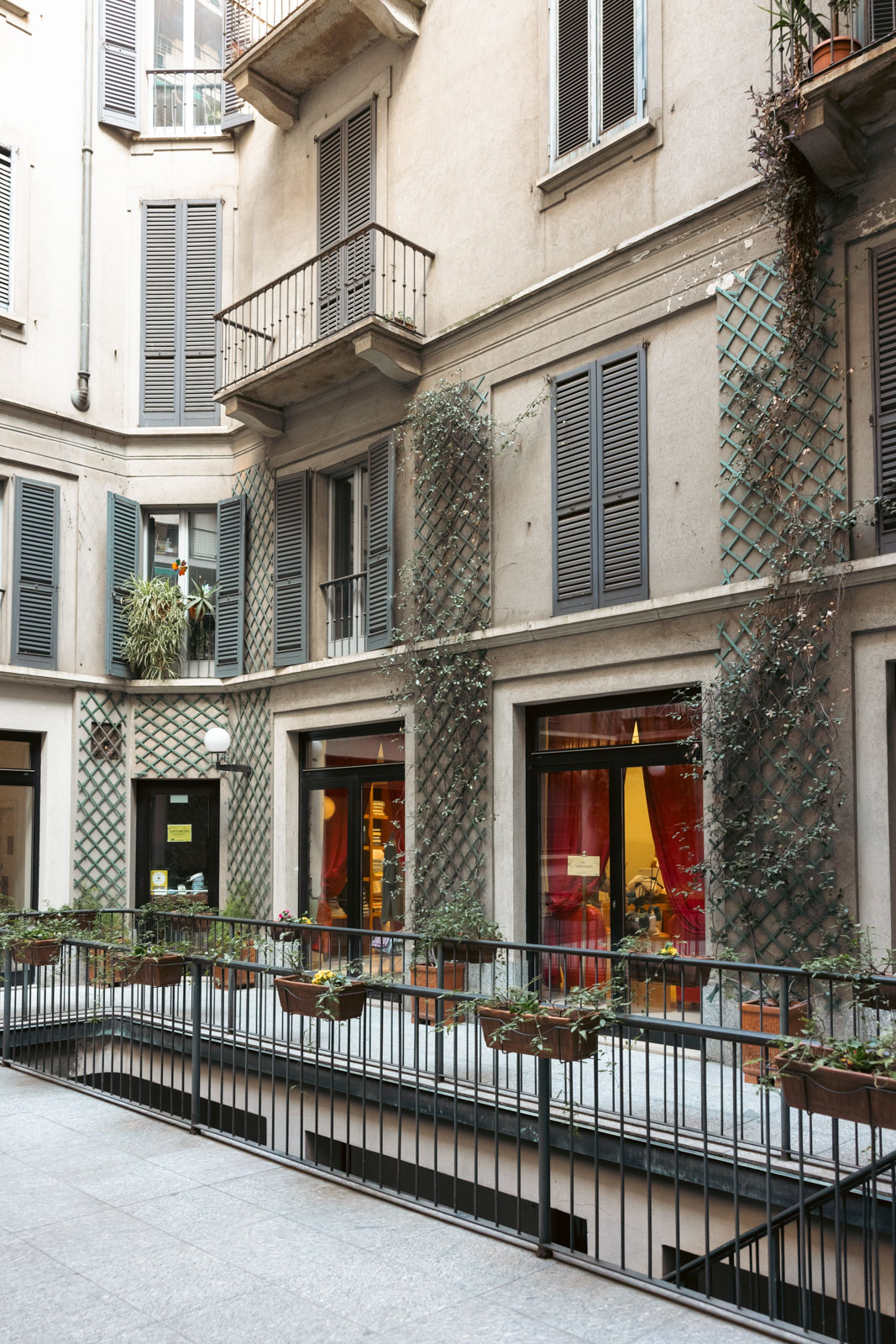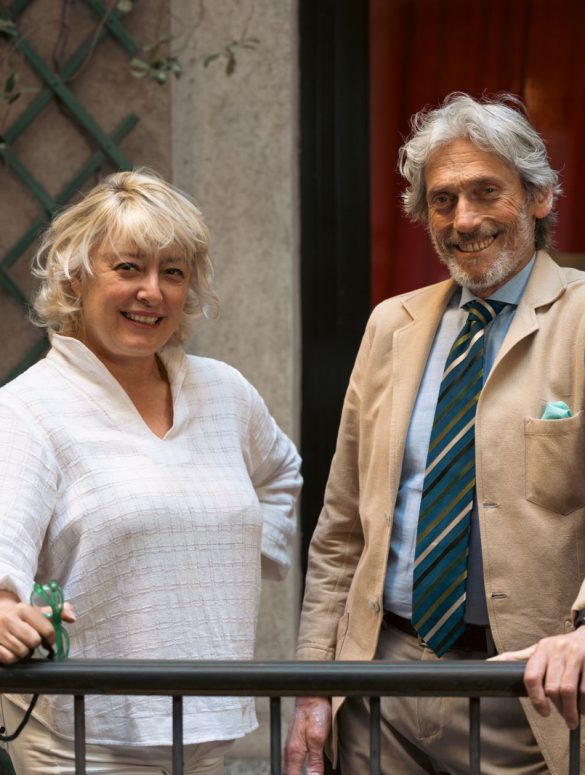We last reported on Milanese shirt tailor Alessandro Siniscalchi and my experiences with his work in December 2020. Two weeks after my visit to his studio, the first shirt was finished. In the meantime, I have met Alessandro and his wife Cinzia several times. In Milan at the Trofeo Arbiter, during the last visits to Pitti Uomo in summer 2023 and January 2024, at the congress of the World Federation of Master Tailors in Biella in August 2023 and, a few months earlier, on our trip to Milan. In the meantime, more shirts have been created. More fittings were necessary because I had put on a little weight. The fittings took place at long intervals, as I haven’t been to Milan that often in recent years.
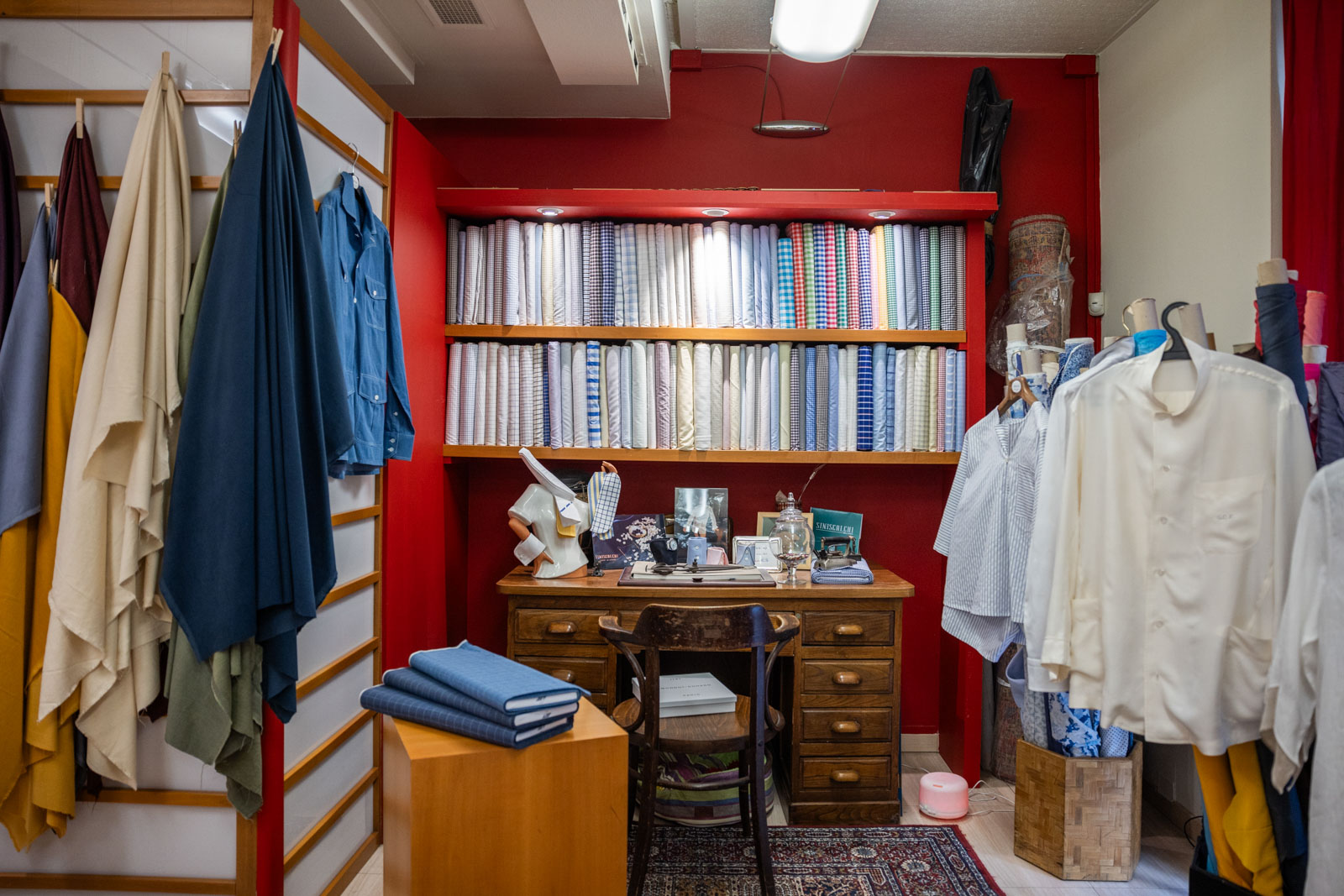
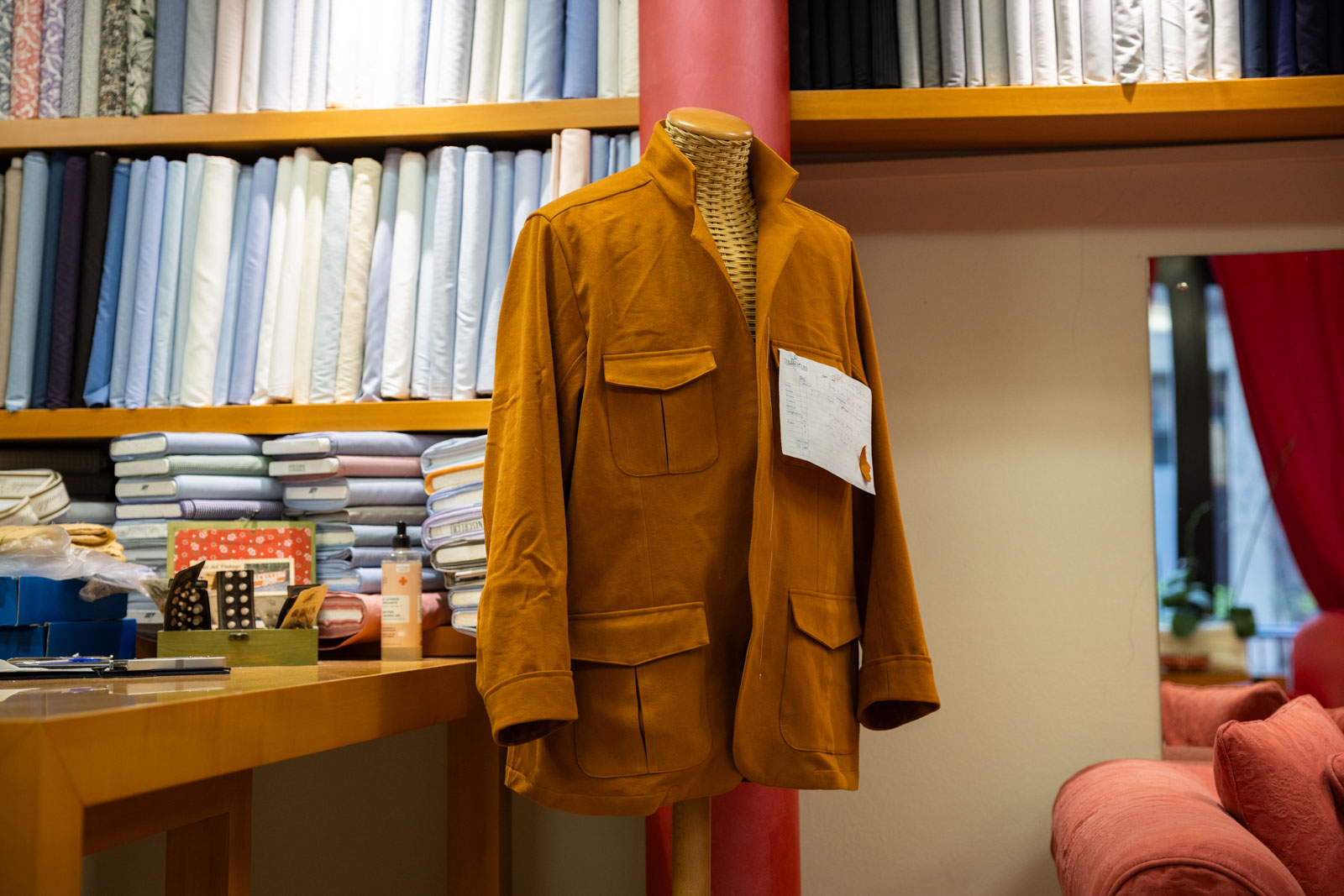
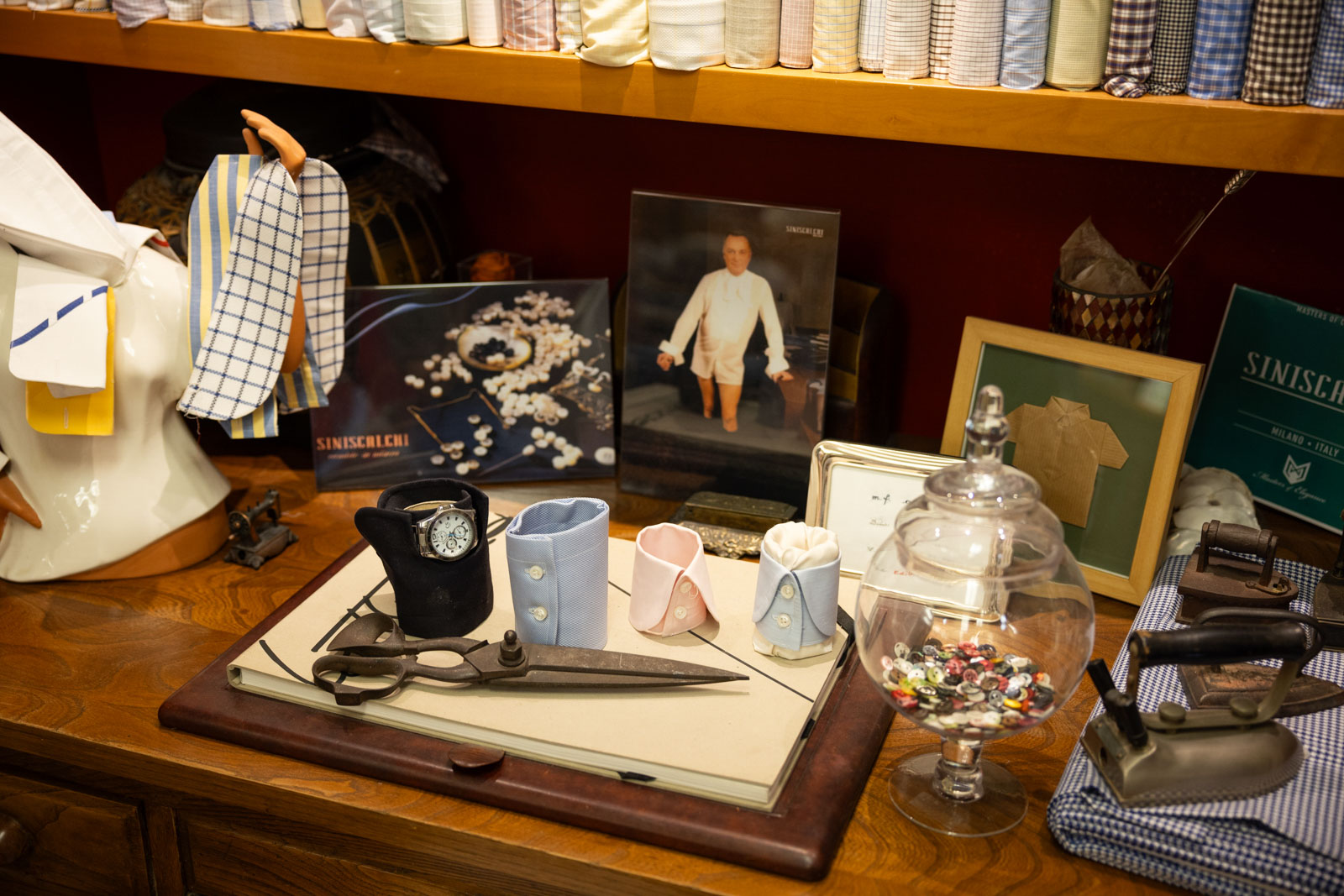
Nothing has changed in the studio or in the way he works during this time. The shirts are still sewn in the studio, which is located directly next to the salesroom. And everything at Siniscalchi is still done by hand. Apart from the seams that are made by machine. And the fit of the shirts is still optimized during fittings, and there are men who only wear suits from a tailor, but who opt for ready-to-wear or made-to-measure shirts. I know all three variants from my own experience. I believe that all three have their justification. Nevertheless, I am a fan of the traditionally tailored shirt, whose pattern is tested at least once and then improved. Whether this shirt is then sewn entirely or partially by hand in the sense of shirt tailoring is of secondary importance to me.
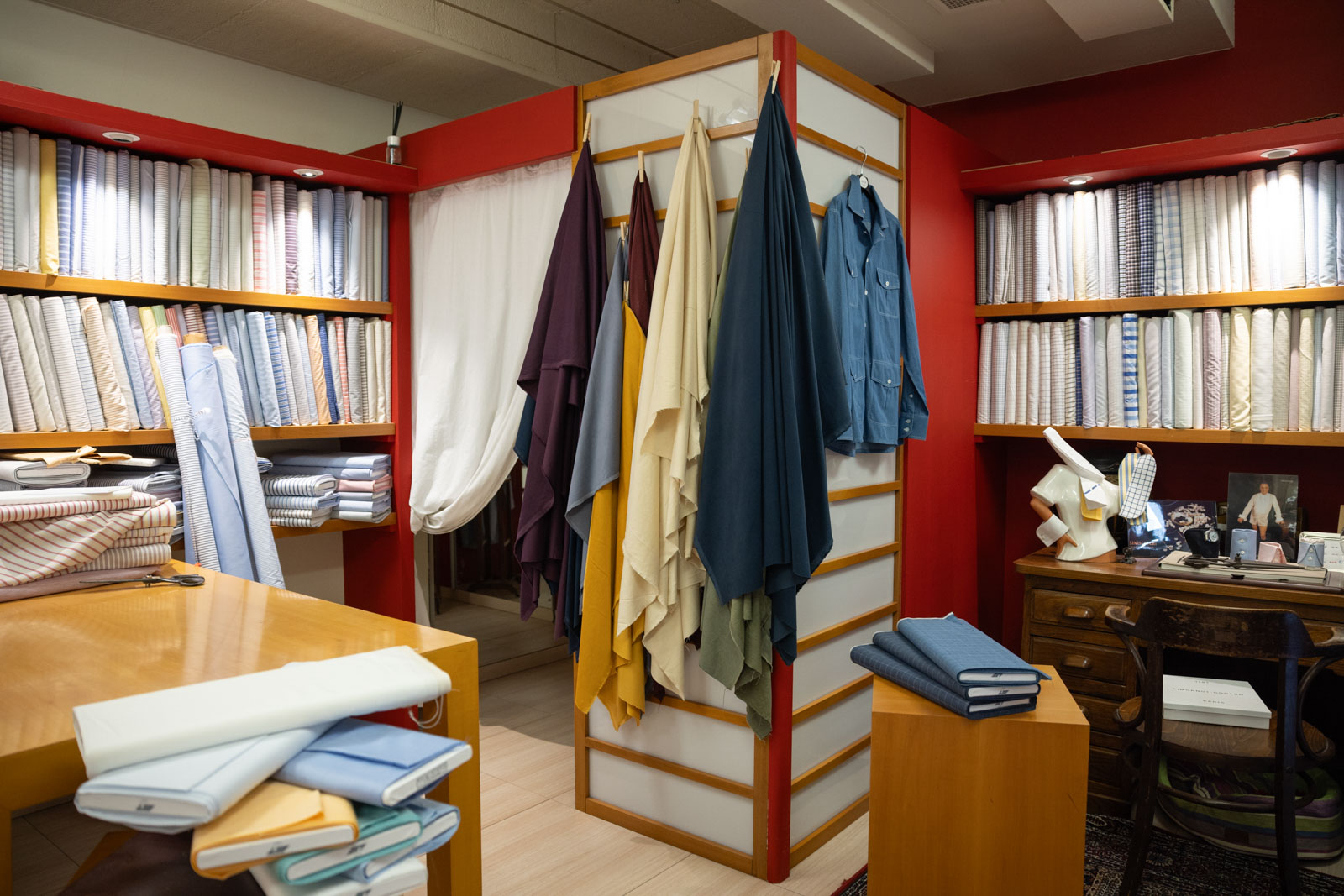

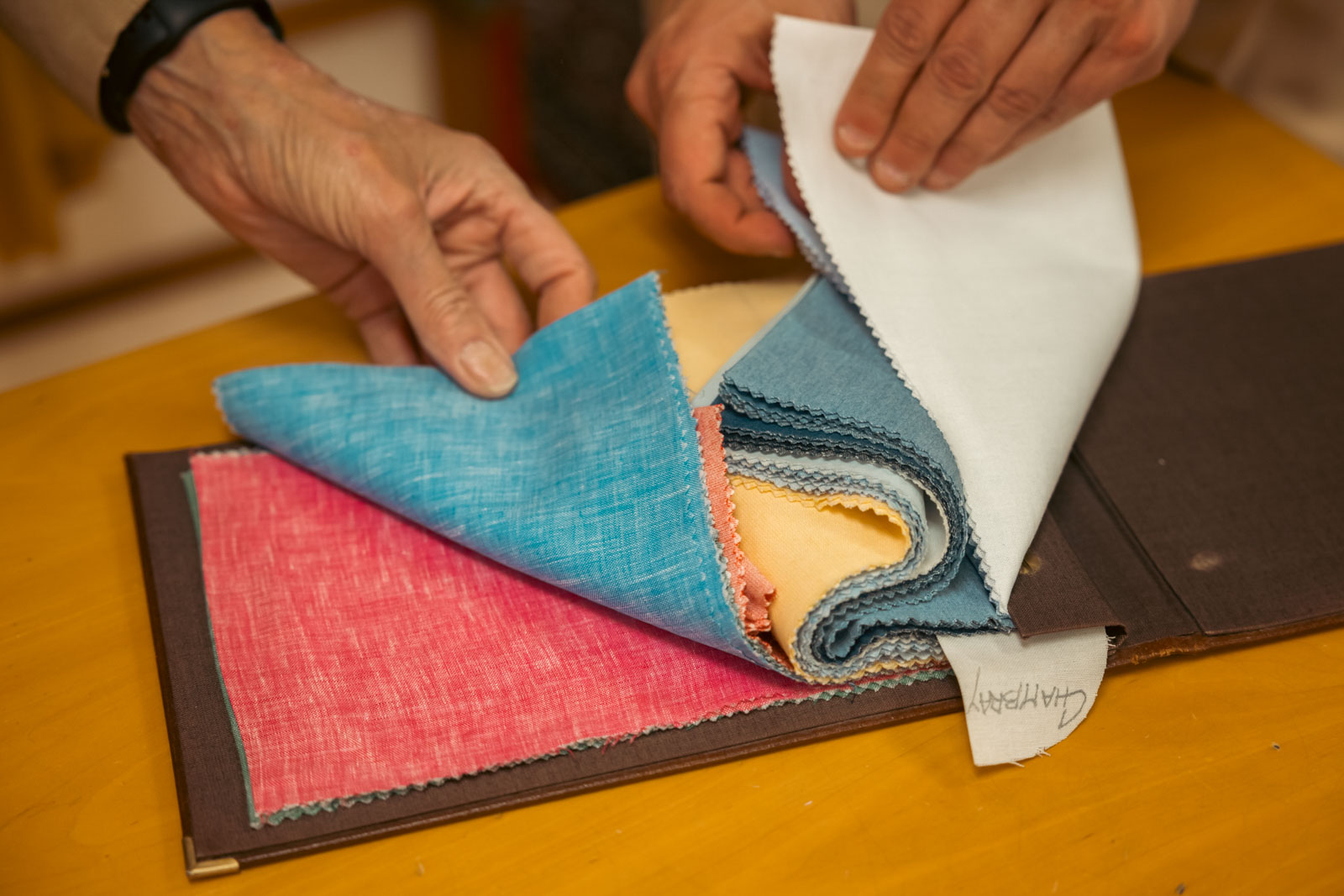
The decisive factor for me is the improved fit after the fitting. Hand-hemmed buttonholes are a bonus for me, but they take a back seat to the correct fit of the shirt. Alessandro Siniscalchi delivers the shirt made entirely by hand, from hand-cutting to hand-hemmed buttonholes. That’s how he learned it from his father and that’s how he still does it himself today. For me, handwork also includes the fittings. This is because they are not just a visual check, as we know them from photo or video fittings; Alessandro Siniscalchi sticks the shirt out. This has the advantage for him and the customer that the effect of the change is immediately visible and noticeable. The fit of the shirt has two sides from the customer’s point of view.



On the one hand, the fit is about how the shirt looks, i.e. how it sits on the body. Secondly, how the shirt feels on the body. The two must be reconciled. A shirt that sits smoothly on the body can constrict the wearer. If it is not constricting at all, it could be too wide again. Alessandro Siniscalchi therefore first checks how the fabric falls during the fitting. The shirt front should fall as smoothly as possible. There should be no creases in front of the shoulders, e.g. due to a shoulder hanging on one side. The fabric should not be folded across the chest. It should also not stretch over the shoulders at the back or crease under the shoulder blades.
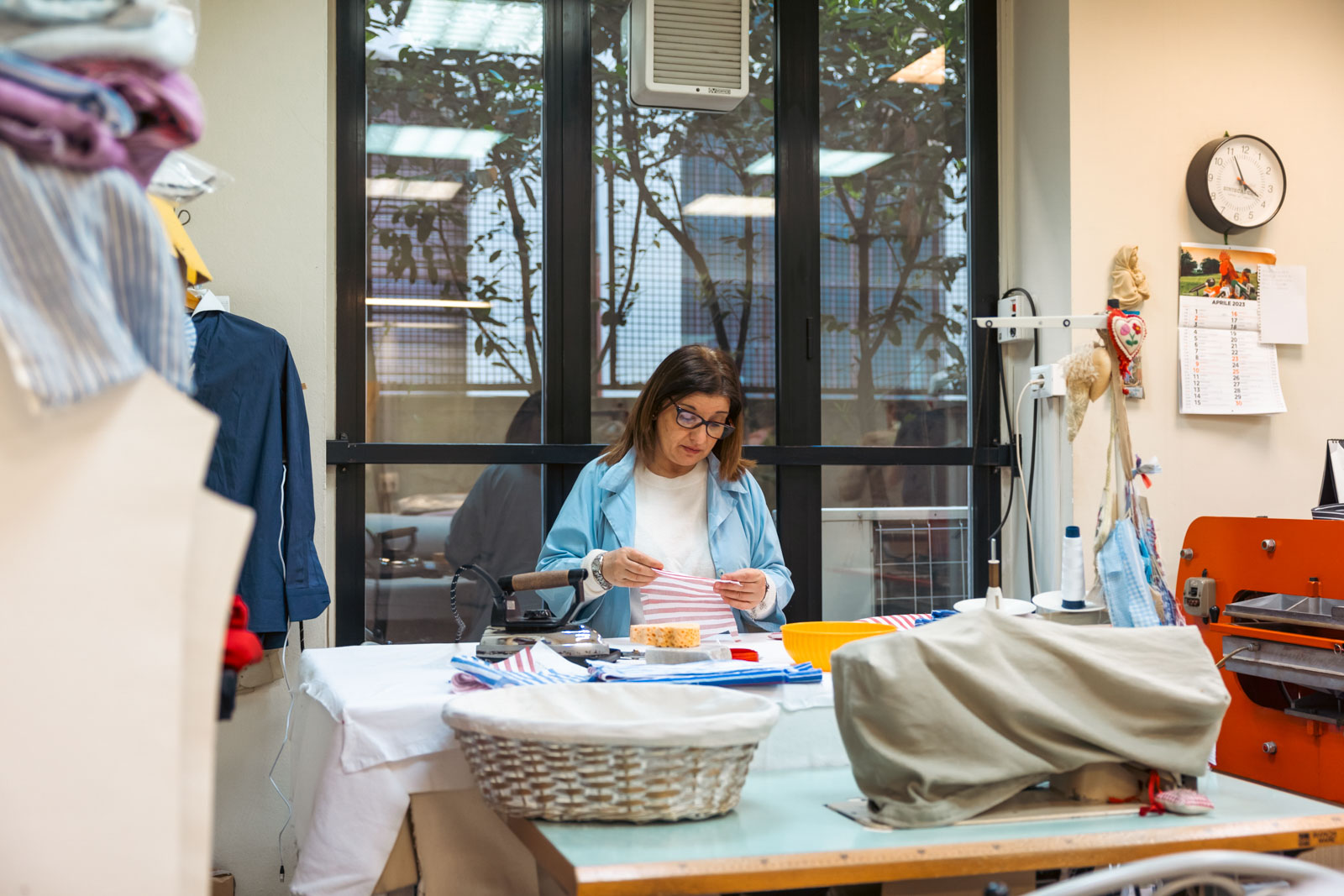
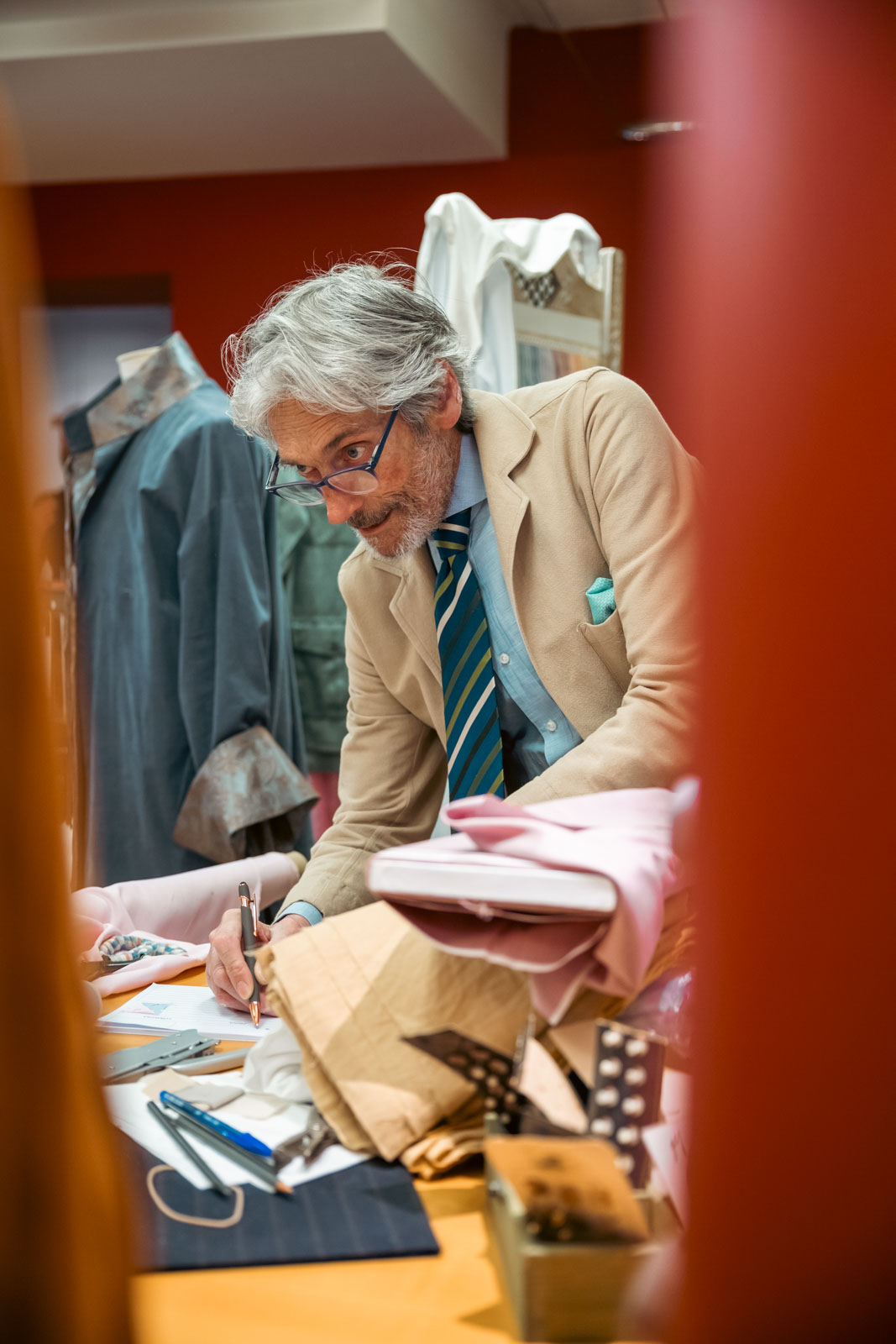
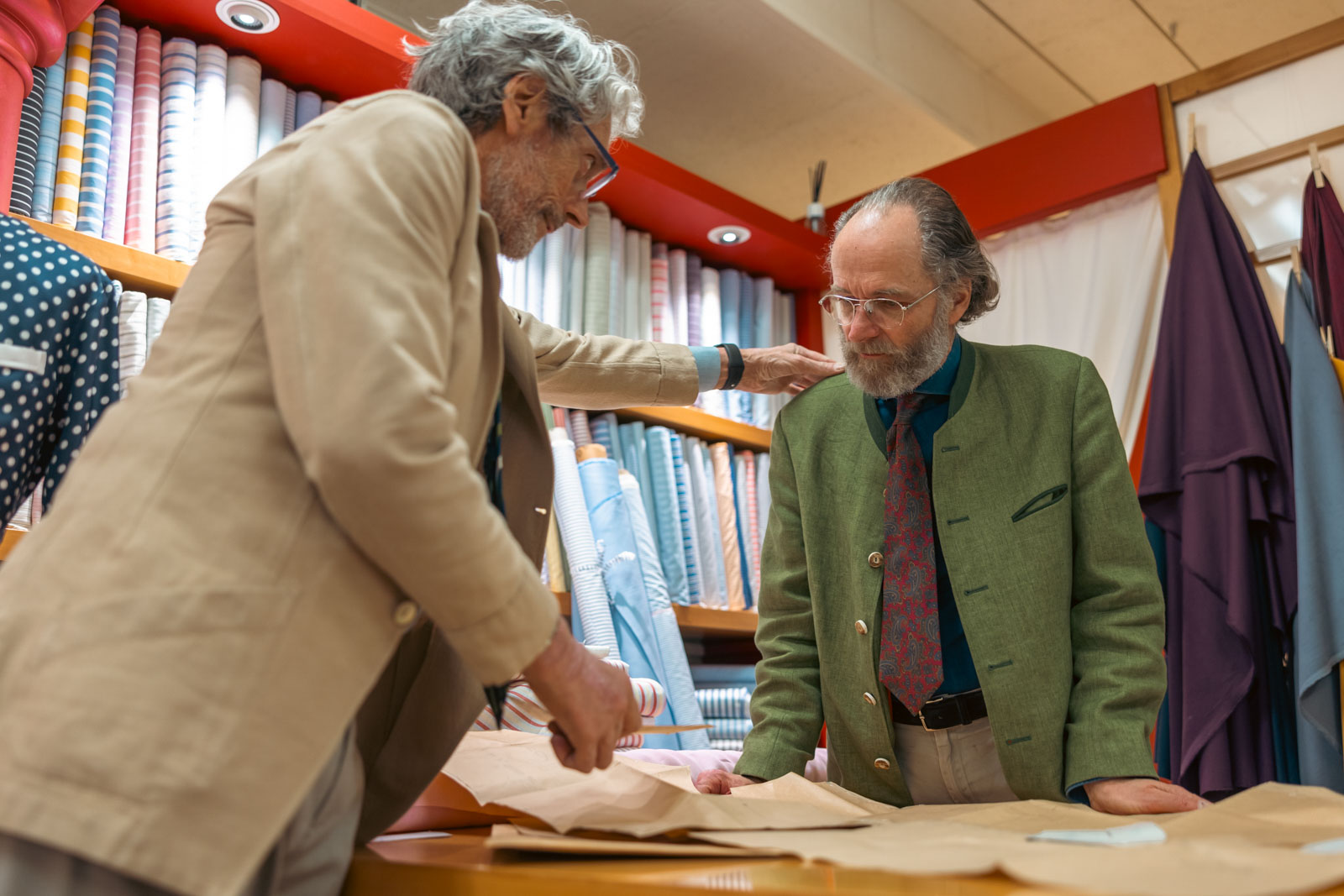
He then asks the customer how the shirt feels with different arm positions, as well as when standing and sitting, and the visible and tangible fit problems that I have described actually only occur with ill-fitting ready-made shirts. Or in the case of made-to-measure shirts, if the cut has only been adjusted slightly, e.g. in the neck width, sleeve length and waist width. In contrast, you will rarely see or feel such flaws when trying on a made-to-measure shirt that is traditionally tailored. This is because Alessandro Siniscalchi designs the cut in such a way that the irregularities of the figure and the customer’s posture are compensated for to such an extent that as few fit imperfections as possible occur. Nevertheless, they still occur, in a weakened form and sometimes barely recognizable to the layman. But that’s what the fitting room is for.
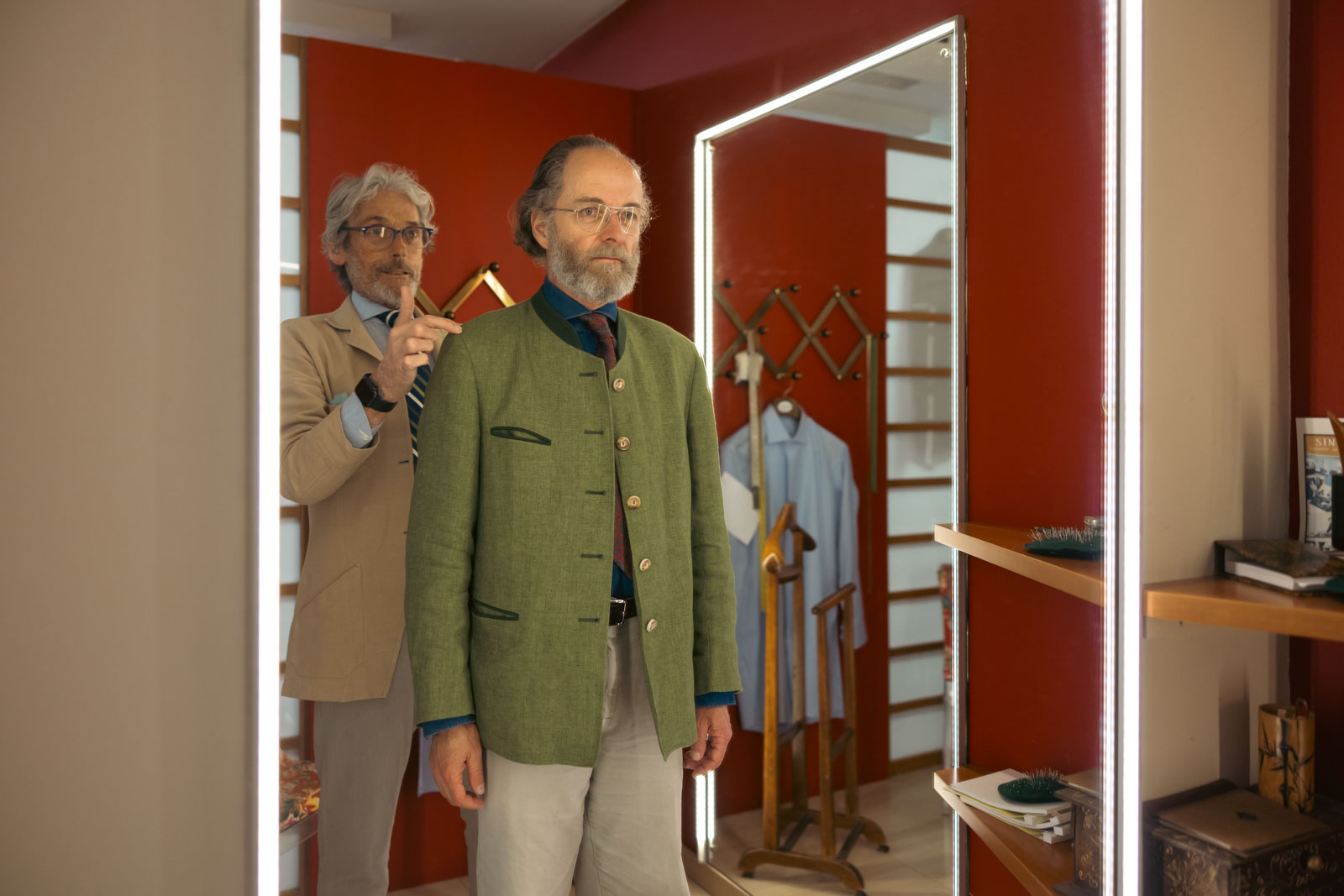
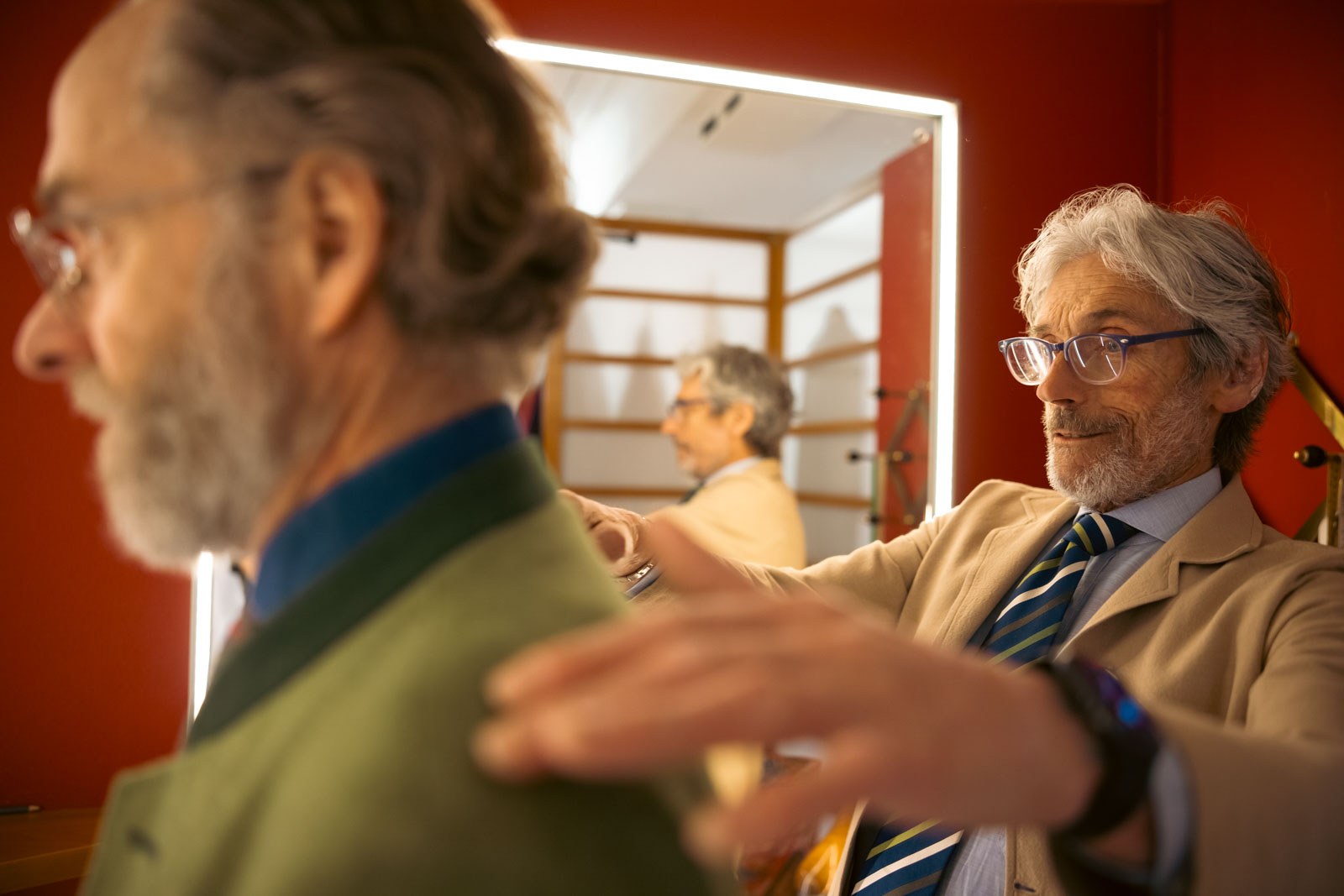
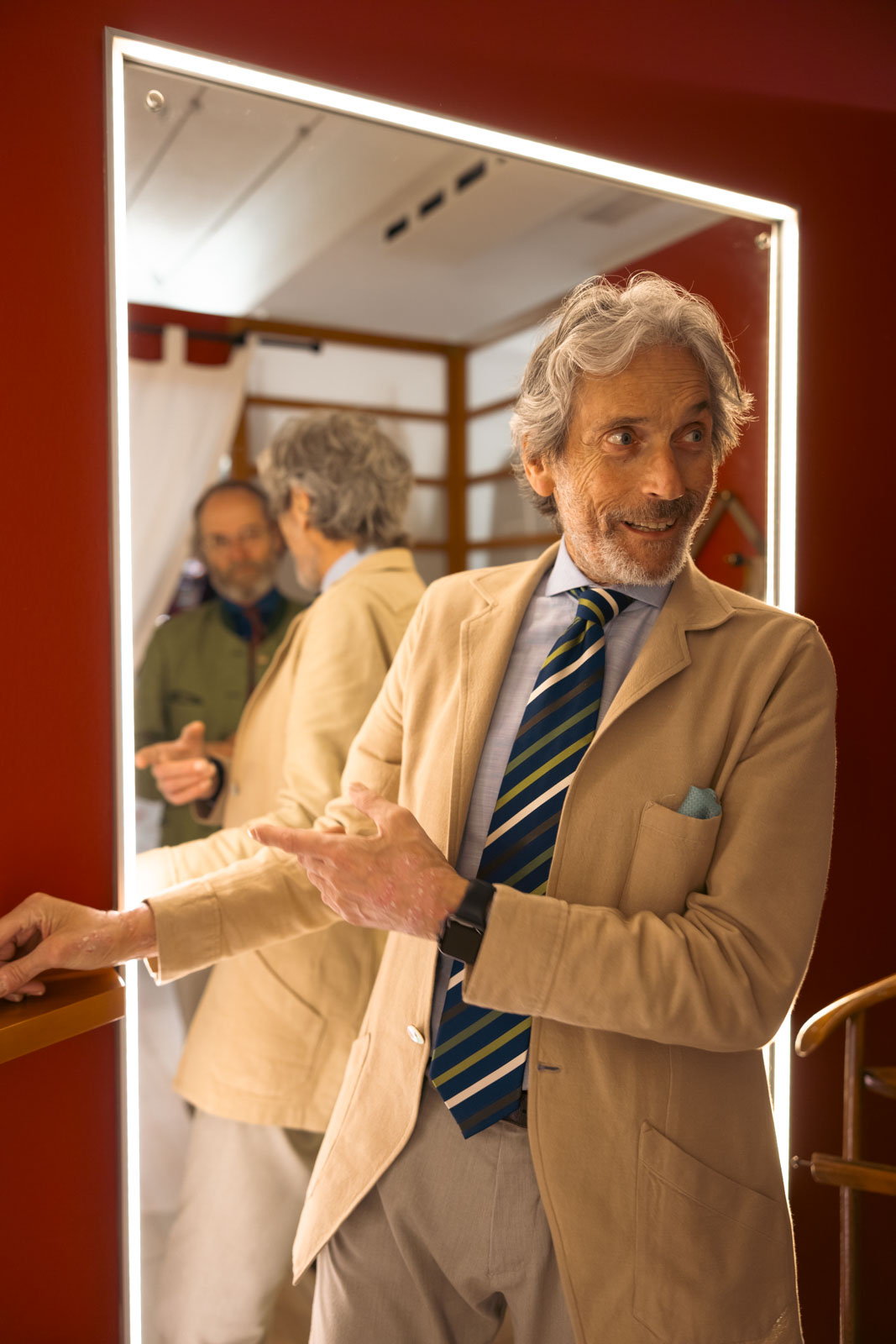
The Milanese shirtmaker pays particular attention to the fit of the sleeves and cuffs. The sleeve must be long enough in every position of the arm. So when I raise my arm, the cuff must not disappear into the sleeve of the jacket. It should fit as snugly as possible around the wrist, but must not be so tight that it cannot move minimally when the arm is raised. Made-to-measure clothing optimizes the sleeve length by making the sleeve longer or shorter. Alessandro Siniscalchi, on the other hand, changes the cut of the sleeve so that it has more length at the back. As a result, the arm has freedom of movement in any position, but the fabric lies smoothly on the front of the sleeve and does not crease over the cuff when the arm is hanging down. Alessandro and Cinzia Siniscalchi are classic shirtmakers, which means that in addition to the core product, shirts and blouses, they also supply other garments that are made in a similar way to shirts. So pyjamas and nightgowns, shirt jackets, tropical shirts of all kinds and shirt dresses. And for the last two or three years, shirt jackets in the style of an unlined light jacket. Alessandro Siniscalchi has worn them at almost every one of our meetings in recent years, unless the occasion dictated evening wear. We will present these shirt jackets in our next report.

